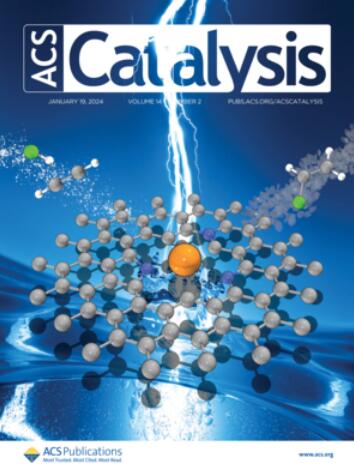机器学习驱动的多元素掺杂赤铁矿光电极的光电流预测
IF 13.1
1区 化学
Q1 CHEMISTRY, PHYSICAL
引用次数: 0
摘要
由于合成方案和评估方法的变化,使用机器学习(ML)可靠地预测异相光催化剂的效率仍然具有挑战性。为了解决这个问题,我们开发了ML模型来预测光电流密度,这是光电化学(PEC)水分解中氢生成速率的一个指标。对于已经证明具有增强太阳能转换潜力的多元素掺杂赤铁矿光电极,我们从大约100个样品中均匀系统地获得了2000多个数据文件。以元素特征和拉曼光谱为解释变量,预测精度较高,决定系数(r2)为0.817,均方根误差(RMSE)为0.105 mA cm-2。通过分析该ML模型,我们确定了半导体特性和器件特性是实现高性能的关键因素,特别是与价相关的信息、电子离域和衬底上的颗粒密度。最后,我们利用我们的高精度ML模型推断了79800个掺杂了两种或三种元素的虚拟赤铁矿样品的光电流密度,揭示了可能增强或降低PEC性能的元素,同时也准确地预测了掩膜样品的性能。这些发现为数据驱动的材料发现和合理的掺杂剂选择建立了一个强大的框架,从而促进了赤铁矿基光电极的优化。本文章由计算机程序翻译,如有差异,请以英文原文为准。
Machine-Learning-Driven Photocurrent Prediction in Multielement-Doped Hematite Photoelectrodes
Reliably predicting heterogeneous photocatalyst efficiency using machine learning (ML) remains challenging, because of variations in synthesis protocols and evaluation methods. To address this, we developed ML models to predict the photocurrent density, which is an indicator of the hydrogen generation rate in photoelectrochemical (PEC) water splitting. For multielement-doped hematite photoelectrodes, which have demonstrated potential for enhancing solar energy conversion, we acquired over 2000 data files uniformly and systematically from approximately 100 samples. A high predictive accuracy with a coefficient of determination (R 2) of 0.817 and a root mean squared error (RMSE) of 0.105 mA cm–2 was achieved using elemental features and Raman spectra as explanatory variables. By analyzing this ML model, we identified both semiconductor properties and device characteristics as key factors for achieving high performance, particularly valence-related information, electron delocalization, and particle density on the substrate. Finally, we extrapolated the photocurrent densities for 79 800 virtual hematite samples doped with two or three elements using our high-precision ML model, revealing elements that could potentially enhance or reduce the PEC performance, while also predicting the performance of masked samples accurately. These findings establish a robust framework for data-driven materials discovery and rational dopant selection, thereby facilitating the optimization of hematite-based photoelectrodes.
求助全文
通过发布文献求助,成功后即可免费获取论文全文。
去求助
来源期刊

ACS Catalysis
CHEMISTRY, PHYSICAL-
CiteScore
20.80
自引率
6.20%
发文量
1253
审稿时长
1.5 months
期刊介绍:
ACS Catalysis is an esteemed journal that publishes original research in the fields of heterogeneous catalysis, molecular catalysis, and biocatalysis. It offers broad coverage across diverse areas such as life sciences, organometallics and synthesis, photochemistry and electrochemistry, drug discovery and synthesis, materials science, environmental protection, polymer discovery and synthesis, and energy and fuels.
The scope of the journal is to showcase innovative work in various aspects of catalysis. This includes new reactions and novel synthetic approaches utilizing known catalysts, the discovery or modification of new catalysts, elucidation of catalytic mechanisms through cutting-edge investigations, practical enhancements of existing processes, as well as conceptual advances in the field. Contributions to ACS Catalysis can encompass both experimental and theoretical research focused on catalytic molecules, macromolecules, and materials that exhibit catalytic turnover.
 求助内容:
求助内容: 应助结果提醒方式:
应助结果提醒方式:


